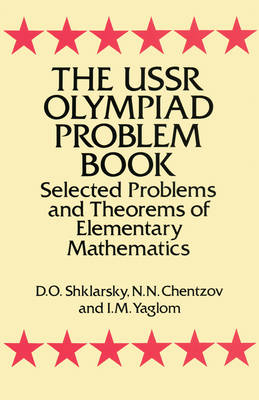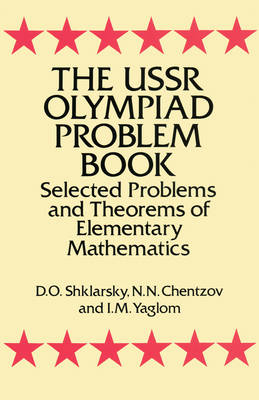
- Afhalen na 1 uur in een winkel met voorraad
- Gratis thuislevering in België vanaf € 30
- Ruim aanbod met 7 miljoen producten
- Afhalen na 1 uur in een winkel met voorraad
- Gratis thuislevering in België vanaf € 30
- Ruim aanbod met 7 miljoen producten
Zoeken
The USSR Olympiad Problem Book
Selected Problems and Theorems of Elementary Mathematics
D O Shklarsky, N N Chentzov, I M Yaglom
€ 34,95
+ 69 punten
Omschrijving
This book contains 320 unconventional problems in algebra, arithmetic, elementary number theory, and trigonometry. Most of the problems first appeared in competitive examinations sponsored by the School Mathematical Society of the Moscow State University and the Mathematical Olympiads held in Moscow. Although most of the problems presuppose only high school mathematics, they are not easy; some are of uncommon difficulty and will challenge the ingenuity of any research mathematician. Nevertheless, many are well within the reach of motivated high school students and even advanced seventh and eighth graders.
The problems are grouped into twelve separate sections. Among these are: the divisibility of integers, equations having integer solutions, evaluating sums and products, miscellaneous algebraic problems, the algebra of polynomials, complex numbers, problems of number theory, distinctive inequalities, difference sequences and sums, and more.
Complete solutions to all problems are given; in many cases, alternate solutions are detailed from different points of view. Solutions to more advanced problems are given in considerable detail. Moreover, when advanced concepts are employed, they are discussed in the section preceding the problems. Useful in a variety of ways in high school and college curriculums, this challenging volume will be of particular interest to teachers dealing with gifted and advanced classes.
The problems are grouped into twelve separate sections. Among these are: the divisibility of integers, equations having integer solutions, evaluating sums and products, miscellaneous algebraic problems, the algebra of polynomials, complex numbers, problems of number theory, distinctive inequalities, difference sequences and sums, and more.
Complete solutions to all problems are given; in many cases, alternate solutions are detailed from different points of view. Solutions to more advanced problems are given in considerable detail. Moreover, when advanced concepts are employed, they are discussed in the section preceding the problems. Useful in a variety of ways in high school and college curriculums, this challenging volume will be of particular interest to teachers dealing with gifted and advanced classes.
Specificaties
Betrokkenen
- Auteur(s):
- Uitgeverij:
Inhoud
- Aantal bladzijden:
- 480
- Taal:
- Engels
- Reeks:
Eigenschappen
- Productcode (EAN):
- 9780486277097
- Verschijningsdatum:
- 28/09/1993
- Uitvoering:
- Paperback
- Formaat:
- Trade paperback (VS)
- Afmetingen:
- 131 mm x 223 mm
- Gewicht:
- 467 g

Alleen bij Standaard Boekhandel
+ 69 punten op je klantenkaart van Standaard Boekhandel
Beoordelingen
We publiceren alleen reviews die voldoen aan de voorwaarden voor reviews. Bekijk onze voorwaarden voor reviews.








